
Review on Enhance Your Navigation Experience with the Garmin 18x LVC GPS Navigator Unit by Justin Frazier

Great for timing, high sensitivity receiver
I bought the GPS 18x LVC for its high accuracy of 1 pulse per second for NTP timing purposes. This output is not available on other GPS 18x models. For those who are only interested in navigation and not accurate timekeeping, the GPS 18x USB model is probably the best option. want. I decided to connect the GPS to a small circuit board that supplies power to the GPS, has a fuse and LEDs to indicate the status of the GPS: one LED indicates that power is being applied and the other LED indicates when that PPS signal present is transmitted. The circuit board has a DB-9 serial connection to the computer. Other people I know have connected the PPS and data cables directly to the DB-9 serial port and the power/ground cables to the USB-A connector with no LEDs. Works well nonetheless - the GPS itself draws around 60mA (mine draws 75mA with the LEDs) so it can easily be powered from a USB port (which can supply 100mA without the need for additional device power). That is hard. Evaluate the GPS navigator for yourself, it's that simple, and there aren't that many features: turn on the device, let it see the sky, and it starts outputting data. It managed to find the initial blockage and emit the PPS signals about 3 minutes after it was first turned on. Since then, it can recover the lock within about 5 seconds after power cycle. I put it on a box next to a northeast facing window in my apartment for testing purposes and it can see 5 to 9 satellites depending on the time of day. Although the GPS receiver is not designed for indoor use due to the very weak GPS signal, the 18x is quite sensitive and receives a perfectly usable signal indoors. The receiver supports WAAS/EGNOS for improved accuracy (3m vs. 10-15m). Because the window in my computer room is on the northeast side of my apartment, the receiver cannot see the WAAS/EGNOS satellites in the southern sky. The document available from Garmin at [.] and the Garmin SNSRXCFG configuration software (Windows only but presumably runs on WINE for Linux) available from the software link at [.] are invaluable resources. The default configuration for GPS 18x was pretty good and I just changed a few settings using SNSRXCFG to reflect my specific needs (e.g. increase PPS duration from 100ms to 200ms, turn off PPS signal when GPS is blocked) . lost so I don't accidentally use wrong times etc.). After assembling the board and soldering all the necessary components (about an hour or so), I simply followed the instructions in [.] (specifically, setting the "low_latency" flag with setserial, installing and configuring gpsd, and configuring NTP ) and it worked for me in about 15 minutes. GPSd software makes it easy for the GPS 18x to interact with a computer. After connecting the GPS to the computer and running and stabilizing NTP for several hours, ntpq -p reported that the clock had an offset of 0.000±0.003ms. That means the clock was synchronized to the correct time within three microseconds. This is excellent and about a thousand times better than just using internet time servers. In short, this GPS receiver is good for accurate timekeeping and is very inexpensive. A person with basic soldering skills can easily make the required connector. Garmin's tuning software makes it very easy to change all the settings on the device itself, and the device is both GPSd and NTP compatible. If you are interested in GPS timekeeping, this is almost certainly the best option. Update January 28, 2012: I emailed Garmin with a few questions and they have confirmed that the device only supports the L1 C/A GPS signal and a WAAS/EGNOS compatible add-on. systems. It does not support the new L2C or L5 signals, nor Galileo or GLONASS. The improved L1C signal carried by the new GPS satellites also supports the existing L1 C/A signal, so existing receivers like this device will continue to work indefinitely. car roof and connected the serial port to a laptop with street navigation software installed. The magnetic base keeps him stuck at 160 km/h (100 mph) on the German autobahn. This installation site offered a clear view of the sky at almost all times: 10 GPS satellites were visible and being tracked with a signal to noise ratio of 48-50 (which is excellent and extremely strong) for each satellite and excellent geometry. (HDOP0.8). The device was able to receive the EGNOS signal within a minute, and the estimated position error was 2.5 meters even at a speed of 160 km/h. The weather on the way was bad and it rained heavily: this did not affect the signal strength and the receiver remained waterproof throughout the journey. While the receiver is particularly useful for timekeeping, it is also good for navigation.
- Great for a small home
- Clarity
New products
Comments (0)
Top products in 🌍 Sports & Handheld GPS
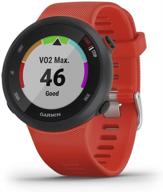
Garmin Forerunner 45: Easy-to-Use GPS Running Watch with Free Training Plan Support in Red

21 Review
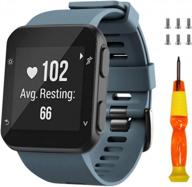
Garmin Forerunner 35 Band Soft Silicone Replacement Watch Strap - Compatible With NotoCity Smartwatch

32 Review
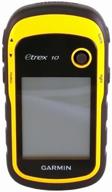
Garmin eTrex 10 Navigator

31 Review

Polar Vantage M Smart Watch, Black

33 Review
Another interesting products
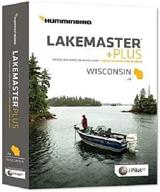
🗺️ Humminbird Lakemaster Plus – Black Wisconsin Contour Digital GPS Map

3 Review
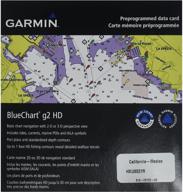
🗺️ Enhance Your Navigation with Garmin BlueChart g2 California/Mexico Saltwater Map microSD Card

7 Review
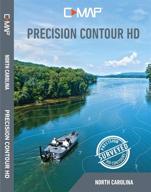
C MAP M NA Y704 MS Precision Contour Carolina

3 Review
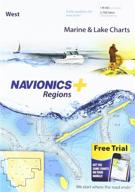
🌊 Enhance Your Marine and Lake Navigation with Navionics Plus Regions West Charts on SD/MSD

6 Review

